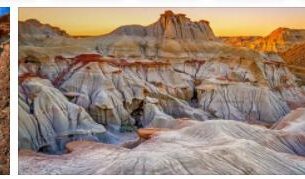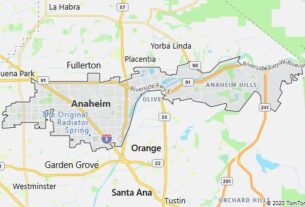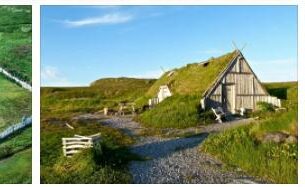British Columbia [ br ɪ t ɪ ʃ kə l ʌ mb ɪ ə], German British Kolumbi | s, western province of Canada on the Pacific, 922,503 km 2, (2017) 4820000 residents (1971: 2, 2 million residents), including 172,500 Indians and 89,400 Métis as well as 508,500 Chinese. The capital is Victoria, around half of the population lives in the greater Vancouver area.
British Columbia extends into the Cordilleras. Between the Rocky Mountains (in Mount Robson 3,954 m above sea level) in the east and the Pacific Coast Mountains, which are partially dissolved into islands and sundes, which are on the border with Alaska at 4,663 m above sea level (Fairweather Mountains; in the Saint Elias Mountains) reached, the intermontane zone extends with the 1,200–1,500 m high Fraser plateau and the adjacent Nechakoplateau to the north. Extensive forests cover around 49% of the total area of the province with high-quality fir, spruce and cedar trees, especially in the coastal mountains. – The climate varies between a mild, precipitation-rich coastal region and a continental climate in the interior of the country with z. Sometimes very warm summers and cold winters.
The timber industry, once the most important branch of the economy in the province, is declining sharply. As a result of extensive logging as well as insufficient reforestation and erosion damage, the forests are severely threatened. Tourism is of great importance, which is favored and growing by attractive landscapes (eg national parks in the Rocky Mountains, coastal regions) and good infrastructure. After Toronto, southwest British Columbia is Canada’s second most important tourist destination. Mining is also important, especially coal (43% of Canadian production), copper, molybdenum ores, gold, zinc; in the northeast, the Peace River area, oil and natural gas are produced. The rich water power is used to generate hydro energy. Fishing (especially salmon) and agriculture are important, which is spatially limited to a few valleys in the south (only about one percent of the province is cultivated land), but specializes in intensive agriculture with vegetable crops, flowers and hops, fruit growing with artificial irrigation, as well as wine (in the Okanagan valley) and pasture farming. According to naturegnosis, British Columbia is the third largest industrial province in Canada; the industry is strongly oriented towards raw materials; a large part of the production is exported. In addition to the wood industry, there are food (especially fish processing), metal and chemical industries and mechanical engineering. In the 1980s and 1990s, the opening up to the Pacific-Asian region promoted a diversification of the economy and the contrast between the center of Vancouver (around half of total production) and the hinterland was further intensified.
History: The discovery of British Columbia was a result of the search for the Northwest Passage. After the first explorations of the coast by Spanish navigators (1774), J. Cook took the land, in which about 80,000 Indians lived when the Europeans arrived, owned by the British Crown in 1778. The British and Americans traded in fur here, organized in the Northwest Company. After it was absorbed by the Hudson’s Bay Company in 1821, the latter ruled the vast area for the next 25 years. In 1846, Great Britain and the United States agreed on the border, and the Hudson’s Bay Company was given the royal mandate to establish a colony on Vancouver Island, which was given crown colony status in 1849. Settlement of the mainland did not begin until 1858 when gold discoveries on the Fraser and some tributaries lured numerous people (mainly English, Scots and Northern Irish) into the country. In 1858 the colony of British Columbia was established.
Victoria
Victoria [v ɪ k t ɔ ː r ɪ ə], capital of the province of British Columbia, Western Canada, on the southeastern tip of Vancouver Iceland, southernmost city in the country, the Census Metropolitan Area has 370,900 residents; catholic bishopric; University (founded in 1963), Institute of Oceanic Sciences, Astrophysical Observatory, Provincial Archives, Provincial Museum, Art Museum; Naval base. In business, Victoria has been from Vancouver since the 1880sOutperformed by the diverse industries remained the food industry, mechanical engineering, pharmaceuticals and shipbuilding. More important are administration, education and research, trade and above all tourism, for which Victoria has a decidedly British image, especially in facilities in the inner city. Residential areas on the coast, the mild Mediterranean climate and the lush vegetation are attractive for retirees. Pacific port, ferry service to the US and Canadian mainland, western terminus of the Trans-Canada Highway (Mile 0).
History
In 1843 the Fort Victoria fur trading post was created for the Hudson’s Bay Company. Around this a settlement was formed, which from 1858 developed into the headquarters of the gold prospectors (gold finds on the Fraser) in the Cariboo Mountains, as Victoria was the only easily accessible port on the northern Pacific coast. The settlement became the capital of the British Crown Colony of Vancouver Island, founded in 1849, and in 1868, after it was united with the Colony of British Columbia in 1866, the Crown Colony of British Columbia. Victoria retained this function for the province of British Columbia.




